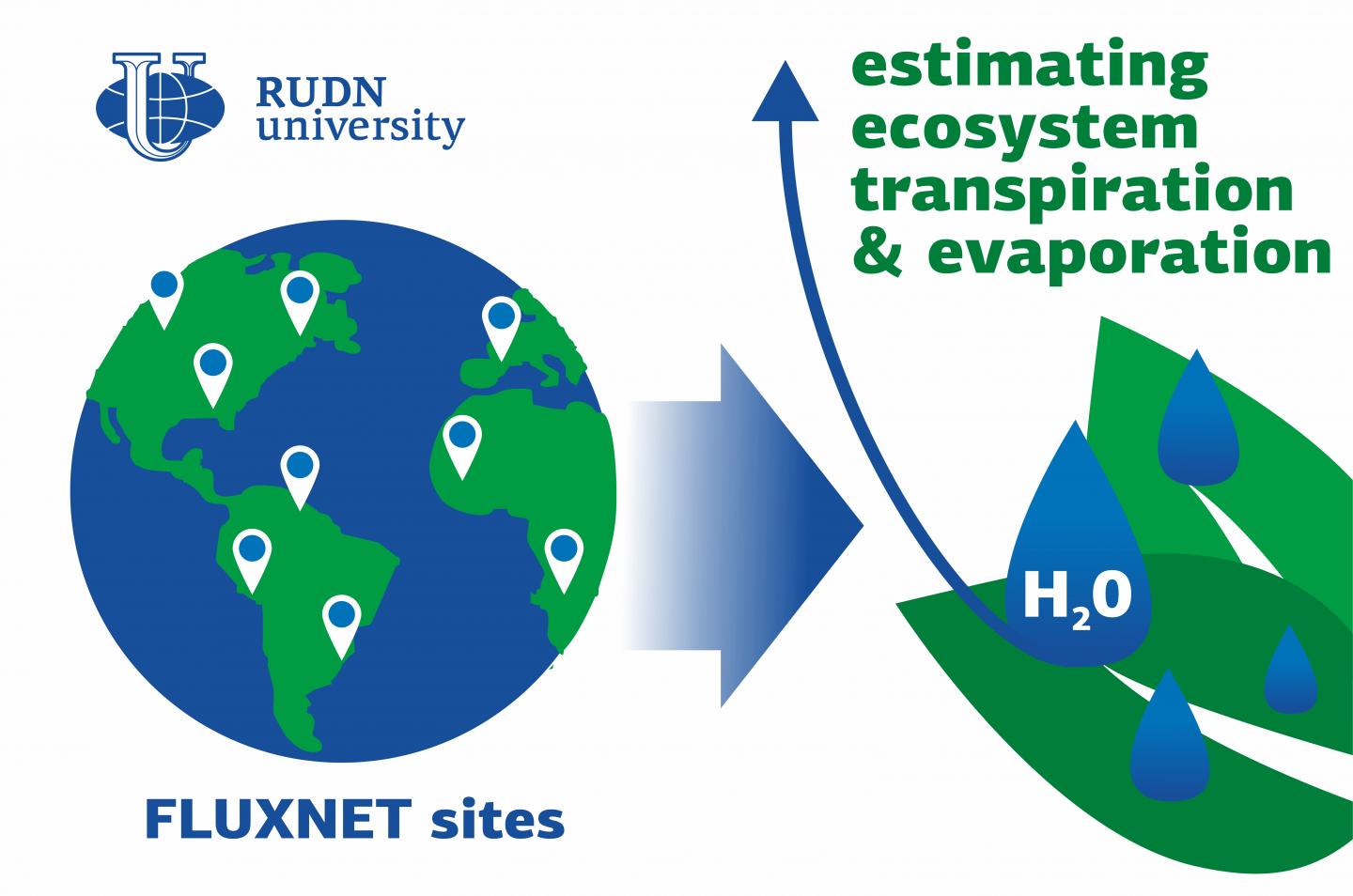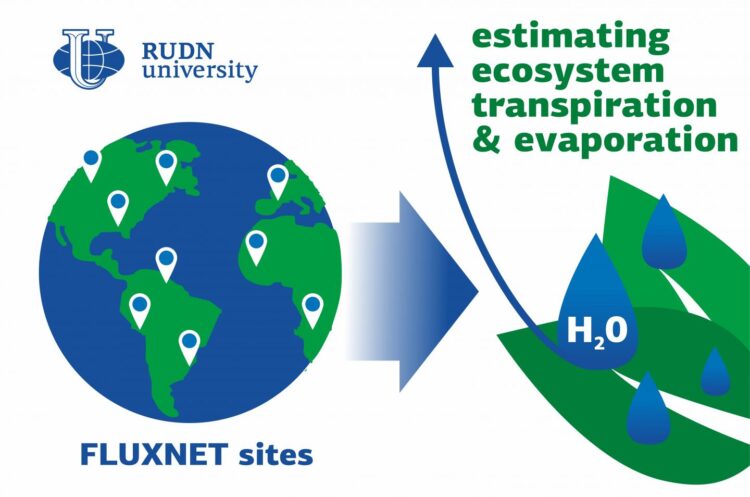
Credit: RUDN University
An ecologist from RUDN University together with colleagues from 14 countries compared three methods for estimating ecosystem transpiration in a study. In the first ever research with such a comprehensive data-set, the team used land-atmosphere water vapor flux data of collected at 251 locations all over the planet, from Australia to Greenland. The outcome of the research help to understand the role of plants in the global water and carbon cycles in the current predicament of global warming. The results of the study were published in the December 2020 issue of the journal Global Change Biology.
Plants roots absorb water from the soil and transport through the stems up to their leaves thanks to a gradient of water vapor pressure. Once it reaches the leaves, water evaporates through leaf pores called stomata and gets into the atmosphere. The physical process by which water is released to the atmosphere by plants is called transpiration. Transpiration is a ‘meeting point’ of carbon, water, and energy cycles in terrestrial ecosystems, since plants need water for fixing atmospheric CO2 by photosynthesis and convert a large fraction of the solar energy input into this process, therefore by improving the modelling of transpiration scientists can analyze the role of vegetation in climate change scenarios. An international group of scientists led by Dr. Jacob Nelson from the Max Planck Institute for Biogeochemistry (Germany) and including an ecologist from RUDN University, compared three methods for estimating ecosystem transpiration based on micrometeorological data from FLUXNET–a global network of stations.
The team used the data collected at 251 FLUXNET sites. Among many environmental physical and chemical parameters, these stations provide continuous flux measurements of water vapor and carbon dioxide between the monitored ecosystems and the atmosphere. To do so, the eddy covariance method is applied, that relies on the three-dimensional monitoring at high frequency of turbulent flows of trace gases. The team chose three methodological approaches to retrieve transpiration from the eddy covariance data and used independent tree sap flow measurements from six test sites to compare the transpiration estimates.
“All three methods are based on the ratio between evapotranspiration and fluxes of carbon uptaken by photosynthesis from the atmosphere, that is termed water use efficiency, and differ by initial assumptions and parameterization. At daily scale, transpiration estimates yielded by the three methods were highly correlated, between 89 and 94%. However, the ratio of transpiration to evapotranspiration differed across models ranging from 45% to 77%.” said Dr. Luca Belelli Marchesini researcher at the Agrarian and Technological Institute of RUDN University (Russia) and at the Fondazione Edmund Mach (Italy).
Having further analyzed the results in search of driving factors, the team concluded that the geographic variation in the transpiration to evapotranspiration ratio (T/ET) was mainly controlled by vegetation and soil characteristics rather than by climatic variables such as temperature and precipitation.
To explain the relative stability of T/ET among sites, the team suggested two hypotheses. The first consists in a trade-off between the amount of precipitation intercepted by vegetation canopies and soil evaporation: ecosystems with a dense leaf cover, not limited by water availability, would thus intercept more rain and soil evaporation would be reduced. In contrast, water limited ecosystems, characterized by a smaller vegetation cover, would have a larger fraction of water evaporated from the soil.
According to the second hypothesis, ecosystems tend to adapt to the available water resources, therefore, for instance, vegetation in dry climates would improve the utilization of the limited precipitation, thus increasing the T/ET ratio.
‘The combination of these two hypotheses likely explains the relative stability of the T/ET ratio in different ecosystems. This study represents the first extensive estimate of ecosystem transpiration based on in-situ data and allows shedding new light on the role of plants’ water use in the context of the global water and carbon cycles” added Dr. Luca Belelli Marchesini.
###
Media Contact
Valeriya Antonova
[email protected]
Related Journal Article
http://dx.





